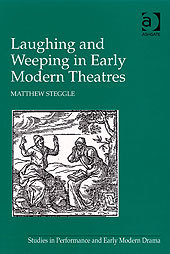Description
Laughing and Weeping in Early Modern Theatres
Studies in Performance and Early Modern Drama Series
Author: Steggle Matthew
Language: English
Keywords
Audience Laughter; audience; Vp; laughter; Early Modern Drama; implied; Implied Stage Direction; stage; Early Modern Theatre; direction; Audience Weeping; drama; Early Modern; literary; Ho Ho; studies; Explicit Stage Directions; jack; Jack Drum’s Entertainment; drums; Early Modern Audience; Early Modern Passions; Heinsius; Stage Directions; Early Modern Stage; Horrid Laughter; Richard III; Haddington Masque; Greene’s Tu Quoque; Early Modern Comedy; Titus Andronicus; Audience Laugh; William Hunt; De Augmentis Scientiarum; Pre-1642 Stage
Approximative price 177.01 €
Subject to availability at the publisher.
Add to cartPublication date: 09-2007
Support: Print on demand
Approximative price 64.97 €
In Print (Delivery period: 14 days).
Add to cartPublication date: 08-2016
· 15.2x22.9 cm · Paperback
Description
/li>Contents
/li>Biography
/li>




